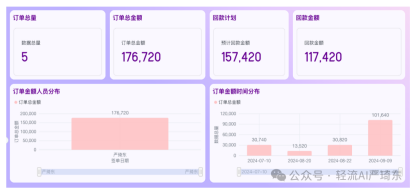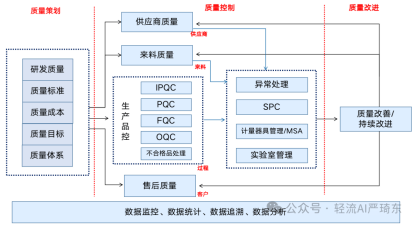A. Overall Description of Pain Points in Enterprise Order Management
In the real - world business scenario, enterprises often encounter a series of dilemmas in order management. These issues not only disrupt daily operations but also have a long - term negative impact on the company's performance. The following are some of the most prominent pain points:
- Inefficient Data Management: Manual data entry and lack of real - time data synchronization across different departments such as sales, warehousing, and finance lead to errors and delays.
- Poor Communication and Coordination: Siloed departments often struggle to communicate effectively, resulting in issues like misaligned production schedules and delivery delays.
- Inadequate Inventory Management: Overstocking or understocking due to inaccurate demand forecasting can tie up capital or lead to lost sales.
- Outdated Technology: Legacy systems may lack the flexibility and functionality required to handle complex order management processes, limiting the company's ability to adapt to market changes.
These pain points collectively create a challenging environment for enterprises, making it difficult to achieve optimal order management and overall business success.
B. Case Analysis of Pain Points
1. Inefficient Data Management
Inefficient data management is a critical pain point in enterprise order management. In many companies, data is manually entered into different systems, which is not only time - consuming but also error - prone. For example, sales representatives may enter customer orders into a system, while warehouse staff record inventory levels in another. These two systems may not be integrated, making it difficult to get a real - time view of the order status. Take the case of Bridgeway, a large - scale cold - food manufacturing enterprise. Their original business system was outdated and could only solve partial business problems. Mobile devices couldn't display detailed product information such as prices, making mobile office work ineffective. Additionally, manual data statistics in sales, warehousing, and finance were inefficient, and data couldn't be connected in real - time. As a result, managers couldn't get a comprehensive view of the business promptly.
2. Poor Communication and Coordination
Poor communication and coordination between departments can cause significant disruptions in the order management process. In a manufacturing company, the sales department may promise customers a certain delivery date without fully consulting the production and logistics departments. This can lead to situations where the production team is unable to meet the promised delivery time, or the logistics team faces challenges in arranging transportation. For example, at Bridgeway, when sales representatives reported orders, the reported order volume often didn't match the vehicle models. This led to serious disputes between the sales and fleet personnel, causing delays in order delivery and affecting customer satisfaction.
3. Inadequate Inventory Management
Inadequate inventory management is another major pain point. Without accurate demand forecasting, companies may overstock products, tying up valuable capital in inventory. On the other hand, understocking can result in lost sales opportunities and dissatisfied customers. In the fashion industry, for example, if a clothing company misjudges the popularity of a particular style, it may produce too many items that don't sell well, leading to high inventory costs. Conversely, if it underestimates the demand for a popular item, it may run out of stock quickly, missing out on potential sales.
4. Outdated Technology
Outdated technology can severely limit an enterprise's order management capabilities. Legacy systems may lack the features needed to handle modern business requirements, such as e - commerce integration, real - time analytics, and mobile access. Many companies find that their existing systems are inflexible and difficult to customize. When they need to adapt to new business models or customer requirements, they often face high costs and long development cycles for system upgrades. For instance, some companies may need to perform secondary development on their systems, which can be time - consuming and expensive.
C. Product Introduction
1. Traditional ERP Systems
Traditional ERP systems are designed to integrate various business processes, including order management. They offer features such as inventory management, production planning, and financial management. These systems can centralize data and provide a comprehensive view of the business. However, they often have a steep learning curve and require significant upfront investment. Moreover, they may lack the flexibility to adapt to specific business needs, and customizations can be costly and time - consuming.
2. CRM Systems with Order Management Features
CRM systems with order management features focus on managing customer relationships and order processing. They can track customer interactions, manage sales leads, and process orders. These systems are useful for improving customer service and sales efficiency. However, they may not provide in - depth supply chain and inventory management capabilities, which are crucial for end - to - end order management.
3. No - code Platform: Wingent
Wingent is a no - code platform that can effectively address the pain points in enterprise order management. It offers a flexible and customizable solution that can be tailored to the specific needs of different businesses.
D. Wingent: Solving Order Management Pain Points
Wingent is a powerful no - code platform that has the ability to address the pain points in enterprise order management comprehensively. With its advanced features and user - friendly interface, it can transform the way companies manage their orders.
1. Streamlining Data Management
Wingent allows for seamless data integration across different departments. It can connect sales, inventory, and finance data in real - time, providing managers with a holistic view of the business. For example, when a sales order is placed, the system can automatically update the inventory levels and notify the finance department for invoicing. This reduces the risk of errors caused by manual data entry and ensures that all departments have access to the most up - to - date information.

2. Enhancing Communication and Coordination
The platform facilitates better communication and collaboration among different departments. It provides a centralized platform where teams can share information, track order progress, and resolve issues in a timely manner. For instance, sales, production, and logistics teams can all access the same order management system, enabling them to coordinate more effectively. This reduces the chances of miscommunication and ensures that everyone is working towards the same goal of timely order fulfillment.

3. Optimizing Inventory Management
Wingent uses advanced analytics and forecasting tools to help companies optimize their inventory levels. It can analyze historical sales data, market trends, and customer demand to provide accurate inventory forecasts. This allows companies to avoid overstocking or understocking situations. For example, it can predict the demand for a particular product during a specific season and recommend the appropriate inventory levels. By doing so, companies can reduce inventory costs and improve customer satisfaction by ensuring product availability.

4. Adapting to Business Changes
One of the key advantages of Wingent is its flexibility. As a no - code platform, it can be easily customized to adapt to changing business requirements. Companies can modify workflows, add new features, or integrate with other systems without the need for extensive coding. This enables businesses to respond quickly to market changes, new customer demands, or internal process improvements. For example, if a company decides to expand into a new market segment, Wingent can be adjusted to accommodate the new order management processes associated with that segment.

In summary, Wingent effectively solves the pain points in enterprise order management by streamlining data management, enhancing communication and coordination, optimizing inventory management, and providing the flexibility to adapt to business changes. It helps companies improve operational efficiency, reduce costs, and enhance customer satisfaction.
Conclusion
Enterprise order management pain points can lead to a multitude of problems, including inefficient operations, dissatisfied customers, and lost business opportunities. However, with the right solutions, these challenges can be overcome. In this article, we have explored the common pain points in enterprise order management, analyzed relevant cases, and introduced some solutions, with a detailed focus on the Wingent platform. Wingent offers a comprehensive and flexible approach to address order management pain points, enabling companies to streamline their processes, improve visibility, and achieve better business results.
Reference: [1] 2小时,我搭建了一个生产管理系统,包含排程、质量、物料、设备、报工等多模块 https://mp.weixin.qq.com/s/G6BG0ez8vV93nBS4BhbWtQ [2] 轻流深度集成DeepSeek 后搭建的 AI+CRM销售管理系统好用到起飞!! https://mp.weixin.qq.com/s/i1F5n5hmoJ_kUnIjBCGwxw [3] DeepSeek很好,不意味着你的公司能用好!自查这3个问题你的企业存在吗? https://mp.weixin.qq.com/s/VvkofupnlJbuA6nxO5XRzg [4] 生产计划、排产调度、现场管控、质量管理怎么做?一文看懂生产全流程管理 https://mp.weixin.qq.com/s/DR2qqMLPuA4ADOOJvtuLPw [5] 5000字详解生产质量管理:供应链、工序、检验、溯源、工具、激励、文化 https://mp.weixin.qq.com/s/TSQHoUsDtlWldBNkiUFbIw